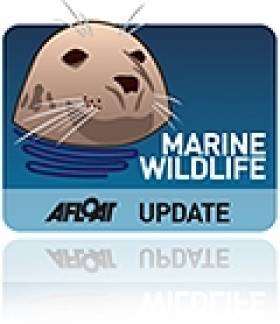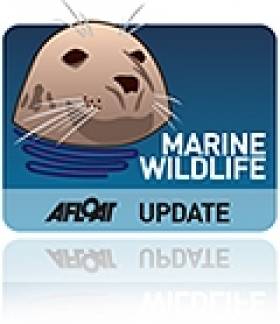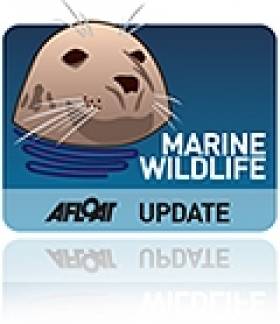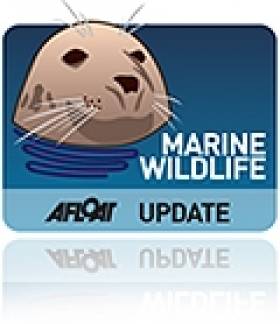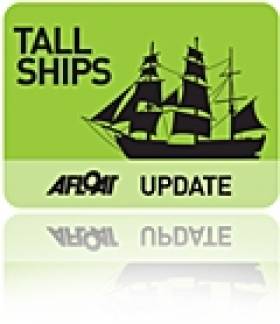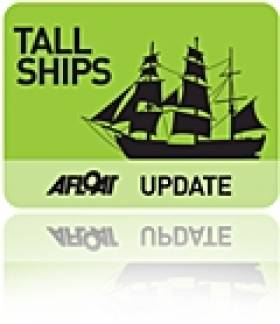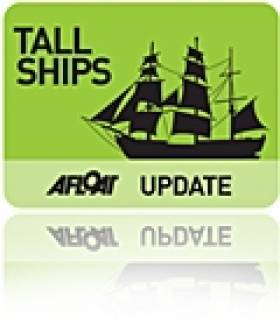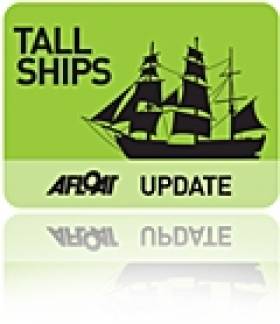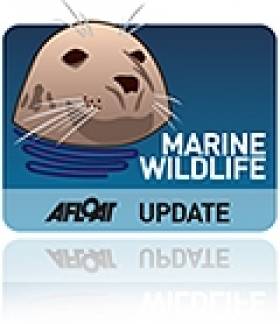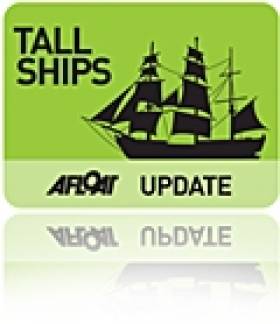Displaying items by tag: IWDG
Bottlenose Dolphins Make New Home in Donegal
The Irish Independent reports that some 100 bottlenose dolphins have made a new home off the Donegal coast in the past week.
The pod of bottlenoses - a rare treat in Irish waters compared to the near ubiquitous common dolphin - has been spoted by boaters and wildlife enthusiasts in the inner Donegal Bay, between Rossnowlagh Beach and Doorin Head.
Patrick Lane of the Irish Whale and Dolphin Group said the bottlenose often swims closer to the shore than its more common counterparts, making it much easier for people on shore to catch a glimpse.
The Irish Independent has more on the story, including photos, HERE.
All-Ireland Whale Watch Day Next Weekend
All are invited to take part in the All-Ireland Whale Watch Day next Sunday 21 August.
The Irish Whale and Dolphin Group (IWDG) is organising 13 land-based whale watches from headlands around the Irish coast on the day from 2pm-5pm as part of the Heritage Council's annual Heritage Week.
Each will be led by experienced IWDG personnel, who will show you how to observe and identify some of the more commonly observed large marine wildlife seen in Irish waters.
The watches are free to attend - all that is required is to bring binoculars or a spotting scope, and dress appropriately for outdoor conditions.
The purpose of day is to raise awareness of the 24 species of cetaceans (porpoises, dolphins and whales) that can be seen around the Irish coast. The event will also provide IWDG researchers with a unique snapshot of whale and dolphin activity in Irish waters.
For details on your nearest whale watch visit the IWDG Whale Watch Ireland website.
On the Trail of Fin Whales in West Cork
Ireland's Wildlife's Calvin Jones recently joined the Irish Whale and Dolphin Group on the trail of fin whales and other marine wildlife off the West Cork coast.
Following reports of sightings just off the coastline, IWDG researchers set off with group members and a ranger from the National Parks and Wildlife Service on chartered vessel the Holly Joe to confirm for themselves.
"It took a while for us to spot the characteristic blow, gracefully arching back and almost ludicrously small dorsal fin of our first fin whale," says Jones, who also notes that the calm conditions made spotting their telltale blows more difficult due to the lack of spray.
Jones continues: "This day the water was so clear that at one point, looking down from the roof of the Holly Joe, I could clearly see the whole whale – from the tip of its head to the impressive tail flukes. It was bigger than the boat by some margin: an awe inspiring sight."
Ireland's Wildlife has more on the story HERE.
Humpback Whales Spotted Off Kerry, Dublin Coasts
Humpback whales have already returned to Irish waters, with recent impressive sightings off Dublin and Kerry, Irish Weather Online reports.
According to the Irish Whale and Dolphin Group (IWDG), a scallop fisherman reported a 'spouting' whale near his boat last Tuesday - a sighting that was later confirmed by whale-watchers along the Dingle peninsula, who photographed two whales off Slea Head.
Meanwhile, last Thursday a third confirmed sighting was made near Lambay Island, off the Dublin coast.
"You are looking for a smallish whale, broad in shape, 25-35ft in length, with a definite 'bushy' blow, and a pronounced hump forward of the dorsal fin," said the IWDG's Pádraig Whooley.
"They are likely to be quite visible on the surface, in contrast with minke whales who rarely exhibit a visible blow and are only briefly on the surface between long dives. Humpbacks may also be curious towards boats."
Irish Weather Online has more on the story, including images, HERE.
Celtic Mist Berths at New Home in Co Clare
The Celtic Mist sailed to its new berth at Kilrush in Co Clare on Saturday to begin its new life as a marine research vessel.
As previously reported on Afloat.ie, the 52-foot yacht was gifted by the Haughey family to the Irish Whale and Dolphin Group (IWDG) to assist in its conservation work.
It also recently completed a leg of the Tall Ships Races from Waterford to Greenock in western Scotland - the only Irish entry to compete in the race this year.
According to Irish Weather Online, the yacht will be used for research and surveying of whales, dolphins and other marine wildlife in Ireland, as well as training people to carry out marine surveys by acoustic monitoring.
Irish Weather Online also has images of the Celtic Mist arriving at its new home HERE.
Haughey's Celtic Mist: A Stormy History
The Irish Independent today recounts the tumultuous history of the Celtic Mist - the yacht once owned by the late former Taoiseach Charles Haughey that recently took part in the Tall Ships Races has now begun a new life as a research vessel with the Irish Whale and Dolphin Group (IWDG).
"But as the boat continues to ride the waves off the west coast of Ireland it will forever be associated with the shenanigans of 'Champagne Charlie'," writes John Costello.
Though controversial for many - from its purchase in 1987 and its subsequent lavish outfitting to the extravagance of the lobster and vintage wine that were always available on board - there are also fond memories, particularly in Dingle, where Haughey helped to transform the harbour.
And who can forget the time when Loyalist terrorists threatened to blow up the yacht in a bid to avenge the death of Lord Mountbatten?
The Irish Independent has more on the Celtic Mist's storied past HERE.
Celtic Mist to Berth in Kilrush Creek Marina, Co Clare
Shannon Development is sponsoring the IWDG by providing a berth for Celtic Mist at Kilrush Creek Marina as the Company sees it as an important asset for West Clare. Shannon Development's Regional Development Manager for Clare Finbarr Brougham said: "We are delighted that IWDG secured Celtic Mist for Kilrush Creek Marina as it will provide a significant focal point of interest in the Marina and should attract a number of visitors to the yacht with the consequent knock on effect to the town of Kilrush. We would like to take the opportunity of wishing the Irish Whale and Dolphin Group every success in relation to the future use of Celtic Mist."
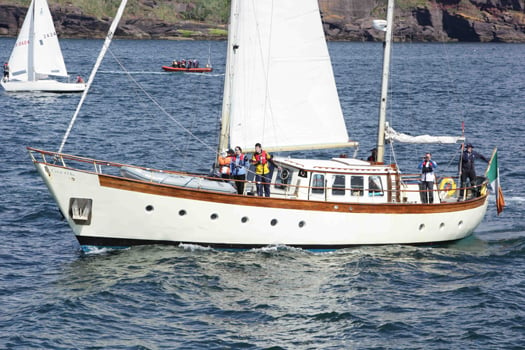
Celtic Mist is heading for Kilrush. Photo: Shay Fennelly
The yacht will be used for research and surveying for whales, dolphins and other marine wildlife in Ireland. It will also be used for training people to carry out marine surveys including the use of acoustic monitoring with towed hydrophones.
IWDG Co-ordinator Dr Simon Berrow said: "The marine wildlife around Ireland is superb, with whales, dolphins, seals, seabirds and basking sharks abundant at different locations and times of year. However we still know relatively little about what occurs where and why. Celtic Mist will provide a fantastic platform from which to survey Irish waters and help us learn more about this fantastic resource."
All are welcome to visit Celtic Mist when she arrives in Kilrush on Saturday 16 July. The expected time of arrival is between 1500h and 1600h but it is advisable to check www.iwdg.ie for confirmation.
As the cost of running a yacht like the Celtic Mist will be a major drain on scarce resources, the IWDG are looking for sponsors to help them fund its operation. Anyone interested can get further information by contacting IWDG at www.iwdg.ie
Celtic Mist Reaches Scotland, Ready for New Life
The yacht once owned by former Taoiseach Charles Haughey will return to Ireland next week for its new life as a marine research vessel after completing the first leg of the 2011 Tall Ships Races.
The 52-foot Celtic Mist, the only Irish entrant in this year's races, came "a respectable last in our class”, skipper Fiacc Ó Brolcháin told The Irish Times from Scotland.
As previously reported on Afloat.ie, the yacht will know be fitted out with scientific instruments after it was gifted by the Haughey family to the Irish Whale and Dolphin Group (IWDG) to support its conservation work.
IWDG Confirms 175 Sightings in June
The Irish Whale and Dolphin Group (IWDG) has validated 175 large marine wildlife sighting records for June 2011.
The most commonly recorded species were bottlenose dolphins, accounting for 28 per cent of all sightings, followed by harbour porpoise (25%), minke whales (13.6%), common dolphins (9%) and basking sharks (5%).
Other sightings included Risso's dolphins, killer whales, fin whales, humpback whales and pilot whales.
"This is the second consecutive year that basking shark sightings have declined, with a 36 per cent drop in sightings on the same period in 2010," said IWDG sightings co-ordinator Pádraig Whooley.
The total numbers compare with 270 sightings in June 2010. "The 35 per cent drop in sightings reflects the vagaries of Irish summers," Whooley added.
He also noted that this year marks the first time that the biggest cluster of sightings was off the coast of Co Dublin.
The IWDG has more on the story HERE.
The Celtic Mist, the new flagship of the Irish Whale and Dolphin Group, was berthed in Waterford city for the Tall Ships weekend writes Shay Fennelly. Gifted to the IWDG in May 2011 by the family of a former Irish Prime Minister, Charles Haughey, who declared Irish waters a whale and dolphin sanctuary in 1991.
Celtic Mist left Waterford on Sunday morning in glorious sunshine on passage down the River Suir for the Tall Ships Parade of Sail off Dunmore East watched by thousands of people from the river bank at Passage east, Duncannon and Dunmore East.

Ireland's only entry in the 2011 Tall Ships race from Waterford to Greenock Irish Whale and Dolphin Groups's research vessel Celtic Mist in the Tall Ships Parade of Sail off Dunmore East in Waterford. Photo: Shay Fennelly/Aquaphoto
The Tall Ships fleet was reviewed by Flag Officer Commanding Naval Service Commodore Mark Mellet and Sean Flood Sail Training Ireland (Board) and a Goodwill Ambassador for Sail Training International past the LE Aoife. Over 1200 young people, many who have never been to sea before, are onboard the 50 tall Ships sailing to Greenock.
On board Celtic Mist are Captain Fiacc Brolchain, Gary Davis, Eithne Griffith, Deirdre Slevin, Conor Ryan and trainees Siobhan Ardener (19) from Killarney, Co Kerry, and Keith Cleere (19) from New Ross, Co Wexford.
The race started slowly at 15.00hrs, five miles south of the Hook Lighthouse in 10 knots of wind and blue skies and headed for the Irish Sea to Scotland.
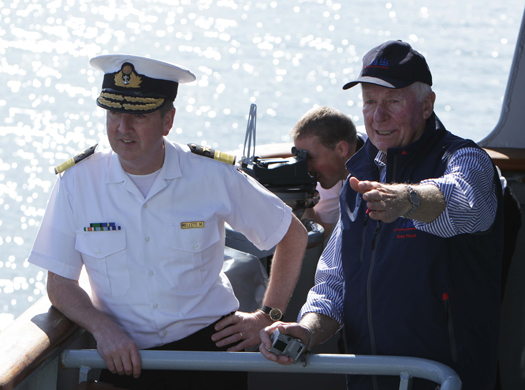
Flag Officer Commanding Naval Service, Commodore Mark Mellet (left) and Sean Flood Sail Training Ireland (Board) and a Goodwill Ambassador for Sail Training International on board LE Aoife reviewing the Tall Ships fleet as they passed off Dunmore East, County Waterford. Photo: Shay Fennelly/Aquaphoto


























